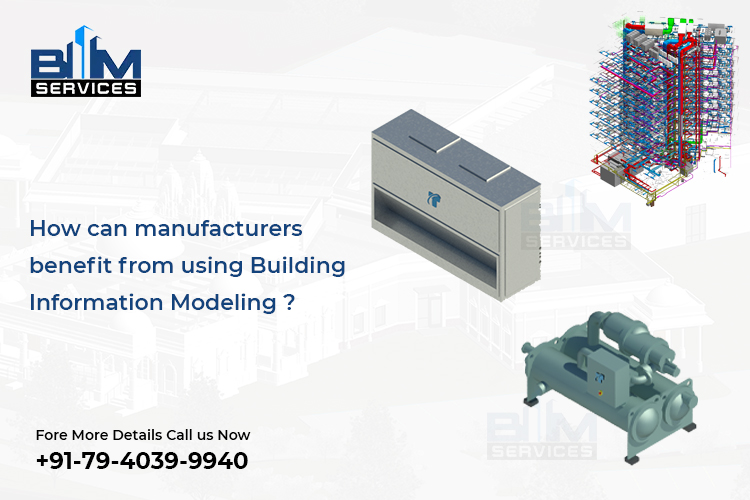How can manufacturers benefit from using Building Information Modeling?

A lot of components that go into buildings are manufactured in a factory or a warehouse location then assembled and installed onsite. These components could be HVAC systems, plumbing pipes, windows, elevators etc. Using high-fidelity 3D BIM models could have shorter schedules, increased accuracy, better collaboration with other stakeholders etc. In the current article we discuss how using BIM could prove advantageous for manufacturers.
Accurate Shop Drawings:
Once the 3D BIM model has been made and clash detection has been carried out shop drawings can be extracted from the error-free model. Shop Drawings provide all the details like dimensions, material specifications, fabrication standards, erection information etc. Using BIM Modeling Services ensures that the information is accurate and that the components that are manufactured will actually fit onsite. Similarly, the shop drawings facilitate onsite assembly and installation. They provide details about the location, specific instructions etc. which reduces the communication gap between the ground workers and manufacturers. Finally, for large components they can also be used to see if any component or part is missing.
Table of Contents
Collaboration between different disciplines:
BIM adoption in the AEC industry has been accelerating with more and more architects and designers understanding the perks of using BIM. As a manufacturer it trickles down to one thing: access to a wider audience. With BIM it will be possible for manufacturers and architects to match the requirements of their clients. Without BIM they will have limited number of client base which could hinder their opportunity to properly expand and grow.
Revit Families:
Revit Family Creation Services provide all the necessary technical aspects of a product or a unit that is essential for manufacturing or marketing. The 3D nature of the Revit families makes it possible to accurately visualize the size and the form of the product. It is even possible to zoom in or out so that different aspects of the Revit family can be minutely observed. Any discrepancies are spotted well in advance of manufacturing. It also enables an ease in modification due to the parametric nature of Revit families. Any object, unit or product can be easily modified, its dimensions, colors, textures etc. can altered as per the unique project requirements. This increases productivity and reduces the project delivery time. Finally, the manufacturers can even use the same Revit families for their websites, catalogues for quick and effective marketing or even save them for future reference.
Increased Sustainability:
Building Information Modeling is going to play a critical role in reducing the greenhouse emissions. Currently the construction industry is responsible for inconceivable amount of greenhouse emission and large volume of waste. The current Co2 emissions from the building sector are a staggering 38% of the total emissions globally. In the manufacturing process if any product is of incorrect dimensions and is mass manufactured then they won’t fit onsite. This could result in a significant amount of waste of energy and resources. Similarly, forecasting volumes also ensures manufacturing takes place as per the requirements and nothing is produced in access which needs to be discarded. Finally, with BIM it is also possible to examine the future performance of the asset ensuring a durable manufactured product.
Getting started with BIM might be challenging initially for some manufacturers who have are used to a different method of working. However, the advantages gained out of BIM will soon make them wonder why they were no always using BIM.